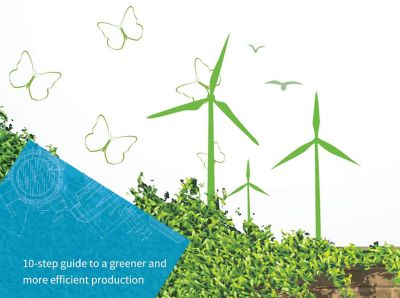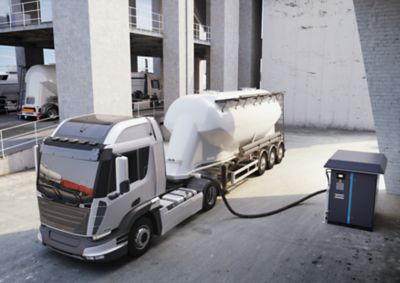Compressed air unit conversion calculator
Looking for a quick and easy way to convert between different measurement units, like meters to feet, psi to bar, liters to gallons, or celsius to fahrenheit? Our free online unit conversion calculator is here to help you.
How to use the calculator?
1. Choose a measurement type
Select the type of unit you want to convert, such as:
- Pressure
- Volume
- Flow
- Temperature
- Power
2. Enter your values
Input the number of the unit you'd like to convert from. The calculator will instantly show the result.
3. Start over anytime
Need to make a new calculation? Just hit the Reset button to clear the fields and begin again.
Pressure unit conversion
Bar conversion
bar to psi
1 bar = 14.5037738 psi
1 psi = 0.0689475729 bar
Examples:
Convert 2.5 bar to psi:
2.5 bar = 2.5 × 14.5037738 psi = 36.2594345 psi
Convert 78 psi to bar:
78 psi = 78 × 0.0689475729 bar = 5.3789116862 bar
Conversion Table
| bar | psi |
| 1 | 14.503774 |
| 2 | 29.007548 |
| 3 | 43.511322 |
| 4 | 58.015096 |
| 5 | 72.518869 |
| 10 | 145.037738 |
bar to Pa
1 bar = 100000 Pa
1 Pa = 0.00001 bar
For practical use, bar is often converted to kPa or MPa:
1 bar = 100 kPa
1 bar = 0.1 MPa
Examples:
Convert 1.8 bar to kPa:
1.8 bar = 1.8 × 100 kPa = 180 kPa
Convert 500 kPa to bar:
500 kPa = 500 × 0.01 bar = 5 bar
Conversion Table
bar |
kPa |
MPa |
1 |
100 |
0.1 |
2 |
200 |
0.2 |
3 |
300 |
0.3 |
4 |
400 |
0.4 |
5 |
500 |
0.5 |
10 |
1000 |
1.0 |
bar to atm
1 bar = 0.986923 atm
1 atm = 1.01325 bar
Examples:
Convert 5.5 bar to atm:
5.5 bar = 5.5 × 0.986923 atm = 5.427077 atm
Convert 2 atm to bar:
2 atm = 2 × 1.01325 bar = 2.0265 bar
Conversion Table
bar |
atm |
1 |
0.987 |
2 |
1.974 |
3 |
2.960 |
4 |
3.947 |
5 |
4.934 |
10 |
9.869 |
bar to mbar
1 bar = 1000 mbar
1 mbar = 0.001 bar
Examples:
Convert 2.3 bar to mbar:
2.3 bar = 2.3 × 1000 mbar = 2300 mbar
Convert 800 mbar to bar:
800 mbar = 800 × 0.001 bar = 0.8 bar
Conversion Table
| bar | mbar |
| 0.1 | 100 |
| 0.2 | 200 |
| 0.3 | 300 |
| 0.4 | 400 |
| 0.5 | 500 |
1 |
1000 |
bar to torr
1 bar = 750.062 torr
1 torr = 0.00133322 bar
Examples:
Convert 1.2 bar to torr:
1.2 bar = 1.2 × 750.062 torr = 900.0744 torr
Convert 700 torr to bar:
700 torr = 700 × 0.00133322 bar = 0.933254 bar
Conversion Table
| bar | torr |
0.1 |
75.006 |
1 |
750.062 |
2 |
1500.12 |
3 |
2250.19 |
4 |
3000.25 |
5 |
3750.31 |
10 |
7500.62 |
Psi conversion
psi to atm
1 psi = 0.0680459639 atm
1 atm = 14.6959 psi
Examples:
Convert 90 psi to atm:
90 psi = 90 × 0.0680459639 atm = 6.12413675 atm
Convert 3 atm to psi:
3 atm = 3 × 14.6959 psi = 44.0877 psi
Conversion Table
| psi | atm |
| 10 | 0.680 |
| 20 | 1.361 |
| 30 | 2.041 |
| 40 | 2.722 |
| 50 | 3.402 |
| 100 | 6.805 |
psi to torr
1 psi = 51.7149326 torr
1 torr = 0.0193367747 psi
Examples:
Convert 6.2 psi to torr:
6.2 psi = 6.2 × 51.7149326 torr = 320.63258 torr
Convert 200 torr to psi:
200 torr = 200 × 0.0193367747 psi = 3.86735494 psi
Conversion Table
| psi | torr |
| 10 | 517.149 |
| 20 | 1034.30 |
| 30 | 1551.45 |
| 40 | 2068.60 |
| 50 | 2585.75 |
| 100 | 5171.49 |
psi to Pa
1 psi = 6894.76 Pa
1 Pa = 0.0001450377377 psi
For practical use, psi is often converted to kPa or MPa:
1 psi = 6.89476 kPa
1 psi = 0.00689476 MPa
Examples:
Convert 78 psi to kPa:
78 psi = 78 × 6.89476 kPa = 537.79128 kPa
Convert 100 kPa to psi:
100 kPa = 100 × 0.1450377377 psi = 14.50377377 psi
Conversion Table
psi |
kPa |
MPa |
10 |
68.9476 |
0.0689 |
20 |
137.895 |
0.1379 |
30 |
206.843 |
0.2068 |
40 |
275.790 |
0.2758 |
50 |
344.738 |
0.3447 |
100 |
689.476 |
0.6895 |
Standard atmosphere conversion
atm to Pa
1 atm = 101325 Pa
1 Pa = 0.00000986923 atm
For practical use, atm is often converted to kPa:
1 atm = 101.325 kPa
Examples:
Convert 1.5 atm to kPa:
1.5 atm = 1.5 × 101.325 kPa = 151.9875 kPa
Convert 202.65 kPa to atm:
202.65 kPa = 202.65 × 0.00986923 atm = 2 atm
Conversion Table
atm |
kPa |
MPa |
1 |
101.325 |
0.101 |
2 |
202.650 |
0.203 |
3 |
303.975 |
0.304 |
4 |
405.300 |
0.405 |
5 |
506.625 |
0.507 |
10 |
1013.25 |
1.013 |
Flow rate unit conversion
Liters per Second (l/s) conversions
l/s to l/min
1 l/s = 60 l/min
1 l/min = 0.0166666667 l/s
Examples:
Convert 3.4 l/s to l/min:
3.4 l/s = 3.4 × 60 l/min = 204 l/min
Convert 210 l/min to l/s:
210 l/min = 210 × 0.0166666667 l/s = 3.5 l/s
Conversion Table
l/s |
l/min |
10 |
600 |
20 |
1200 |
30 |
1800 |
40 |
2400 |
50 |
3000 |
100 |
6000 |
l/s to m3/min
1 l/s = 0.06 m3/min
1 m3/min = 16.6666667 l/s
Examples:
Convert 18 l/s to m3/min:
18 l/s = 18 × 0.06 m3/min = 1.08 m3/min
Convert 2.4 m3/min to l/s:
2.4 m3/min = 2.4 × 16.6666667 l/s = 40 l/s
Conversion Table
l/s |
m3/min |
10 |
0.6 |
20 |
1.2 |
30 |
1.8 |
40 |
2.4 |
50 |
3.0 |
100 |
6.0 |
Liters per Minute (l/min) conversions
l/min to cfm
1 l/min = 0.0353146667 cfm
1 cfm = 28.3168466 l/min
Examples:
Convert 220 l/min to cfm:
220 l/min = 220 × 0.0353146667 cfm = 7.769226674 cfm
Convert 5 cfm to l/min:
5 cfm = 5 × 28.3168466 l/min = 141.584233 l/min
Conversion Table
l/min |
cfm |
100 |
3.5315 |
200 |
7.0630 |
300 |
10.5945 |
400 |
14.1260 |
500 |
17.6573 |
1000 |
35.3147 |
l/min to m3/min
1 l/min = 0.001 m3/min
1 m3/min = 1000 l/min
Examples:
Convert 3800 l/min to m3/min:
3800 l/min = 3800 × 0.001 m3/min = 3.8 m3/min
Convert 1.25 m3/min to l/min:
1.25 m3/min = 1.25 × 1000 l/min = 1250 l/min
Conversion Table
l/min |
m3/min |
100 |
0.1 |
200 |
0.2 |
300 |
0.3 |
400 |
0.4 |
500 |
0.5 |
1000 |
1.0 |
Cubic Feet per Minute (cfm) conversions
cfm to l/s
1 cfm = 0.47194745 l/s
1 l/s = 2.118880003 cfm
Examples:
Convert 86 cfm to l/s:
86 cfm = 86 × 0.47194745 l/s = 40.586477 l/s
Convert 15 l/s to cfm:
15 l/s = 15 × 2.118880003 cfm = 31.7832 cfm
Conversion Table
cfm |
l/s |
100 |
47.195 |
200 |
94.389 |
300 |
141.584 |
400 |
188.779 |
500 |
235.974 |
1000 |
471.947 |
Something about compressor selection characteristics
Choosing the right compressor isn’t just about power, it’s more about matching the main characteristics in an air compressor: pressure, flow, and application.
- Pressure defines the force of the air delivered and must meet the requirements of your tools or processes.
- Flow rate determines how much air is available to keep your operations running smoothly.
- Application refers to how and where the compressor will be used, industrial settings, workshop tools, or continuous operation each demand different features.
Understanding the balance between these factors is key to making an efficient and cost-effective choice.

